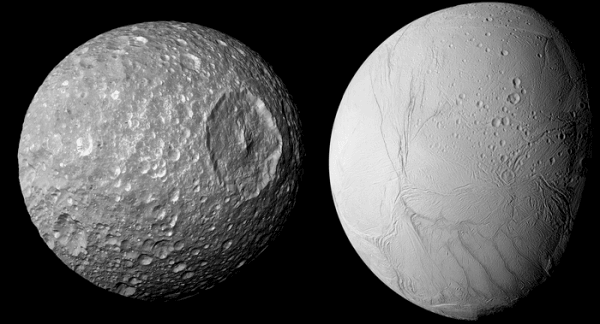A Southwest Research Institute scientist set out to prove that the tiny, innermost moon of Saturn was a frozen inert satellite and instead discovered compelling evidence that Mimas has a liquid internal ocean. In the waning days of NASA’s Cassini mission, the spacecraft identified a curious libration, or oscillation, in the moon’s rotation, which often points to a geologically active body able to support an internal ocean.
“If Mimas has an ocean, it represents a new class of small, ‘stealth’ ocean worlds with surfaces that do not betray the ocean’s existence,” said SwRI’s Dr. Alyssa Rhoden, a specialist in the geophysics of icy satellites, particularly those containing oceans, and the evolution of giant planet satellites systems.
One of the most profound discoveries in planetary science over the past 25 years is that worlds with oceans beneath layers of rock and ice are common in our solar system. Such worlds include the icy satellites of the giant planets, such as Europa, Titan and Enceladus, as well as distant planets like Pluto. Worlds like Earth with surface oceans must reside within a narrow range of distances from their stars to maintain the temperatures that support liquid oceans. Interior water ocean worlds (IWOWs), however, are found over a much wider range of distances, greatly expanding the number of habitable worlds likely to exist across the galaxy.
Read more at Southwest Research Institute
Image: An SwRI scientist has discovered that Saturn’s small moon Mimas (left) likely has something in common with its larger neighbor Enceladus: an internal ocean beneath a thick icy surface. Thought to be a frozen inert satellite, Mimas is now considered a “stealth” ocean world with a surface that does not betray what lies beneath. This discovery could greatly expand the number of potentially habitable worlds thought to exist. (Credit: NASA / JPL-Caltech / Space Science Institute)


